What Is Baseball Field Dirt Made of
Sand Gallery Update: Taking a Closer Look at Baseball Infield Sand
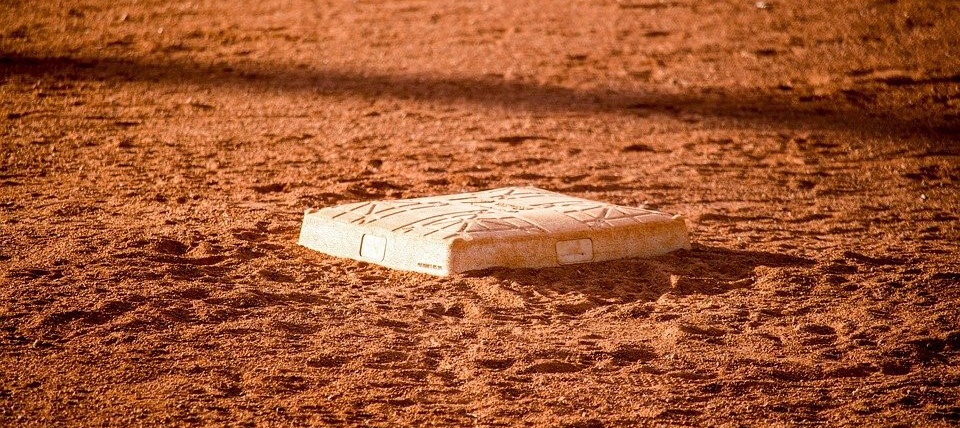
Major League Baseball's Opening Day is just a couple of weeks behind us, so we thought it would be a good time to take a closer look at what makes up part of America's favorite pastime: the baseball infield. The infield mix—what most of us would think of as just dirt—is made up of a very precise combination of sand, silt, and clay, and comes in a variety of colors and compositions depending on the performance required and the cost. From a particle size standpoint, we can assign typical size ranges for each of these three components:
- Sand is defined as mineral particles ranging in size from 1 millimeter to 60 micrometers
- Silt is a much smaller size fraction with mineral particles averaging around 4 micrometers
- Clay is the finest fraction, at 2 micrometers and below
For a typical, or so-called low-maintenance, nonprofessional infield, the components consist of a mix of 70 percent sand, 15 percent clay, and 15 percent silt. For Major League Baseball, the infield mix is a bit different: 55 percent sand, 30 percent clay, and 15 percent silt. The key to these three components existing in a Field of Dreams harmony is the moisture level associated with the mix. If the infield is too wet, the play will become sloppy; too dry, and the infield surface can lend itself to producing wild ball hops and irregular play. The groundskeeper maintains a uniform playing surface by raking the infield between innings along with adding small amounts of infield dirt by hand from a bucket to the areas of the infield that need it. Rainwater drainage is also an important consideration, especially for professional baseball. The infield has to absorb as much rainwater as possible to help reduce the possibility of rain delays and game cancellations.
Since there is nothing like looking at the real thing, we decided to reach out to our friends at Waupaca Sand and Solutions to request some samples of their infield products that they supply to baseball fields around the country. They sent us eight of their most popular infield mix products along with a sample of pitcher's mound clay. How cool is that?
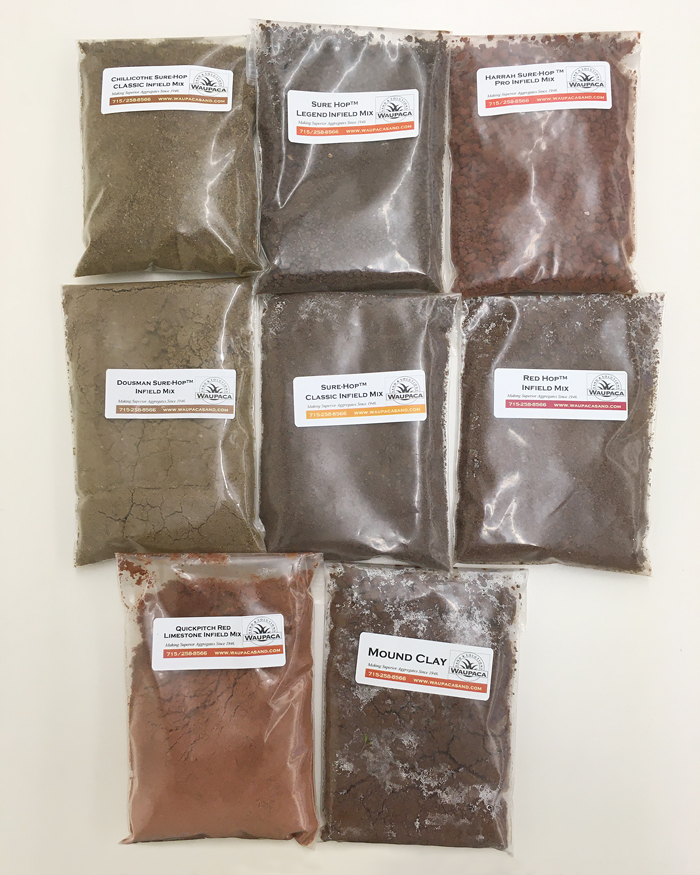
We prepared each of the samples using our standard cardstock/adhesive tape method. As you can see from the paired sets of the photomicrographs below, the individual sand grains are covered with the other infield components: silt and clay. In order to get a better look, we rinsed the sand a few times in water, decanting off the smaller and lighter material. This left us with mostly clean sand grains, although there were still a few grains where some of the non-sand coating remained. Each of the washed baseball infield samples we prepared on cardstock and photographed at 25X magnification are arranged as side-by-side comparisons of each of the infield samples:
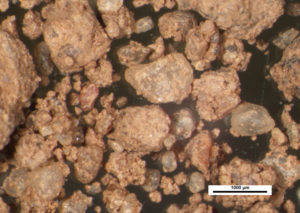
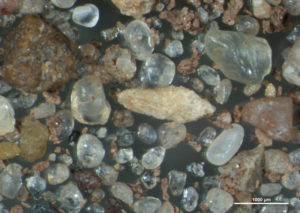
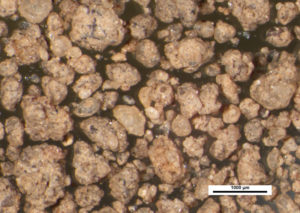
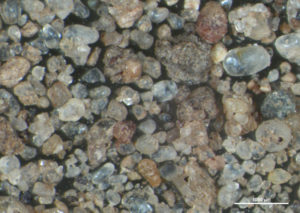
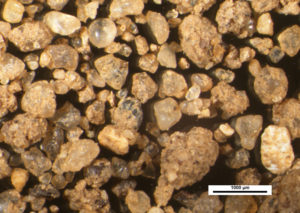
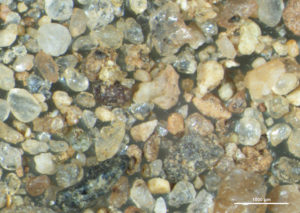
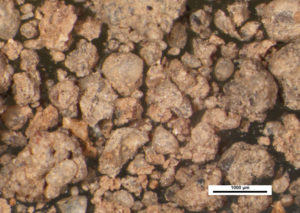
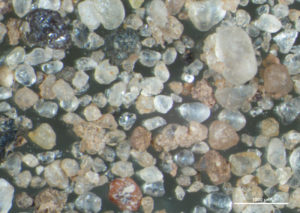
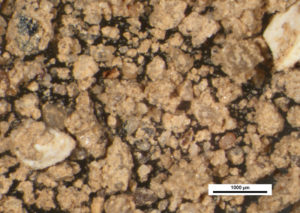
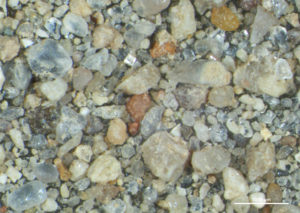
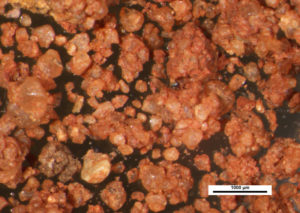
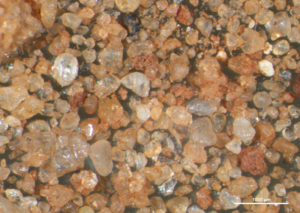
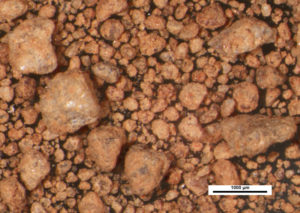
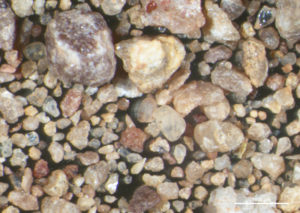
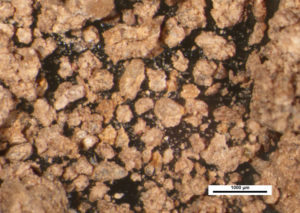
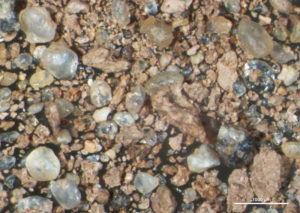
Getting Out Dirt Stains
Aside from the sand component of the infield dirt, the clay portion of the unwashed baseball infield mixes not only plays a major role in the playability of the infield, but also the color of the product. Since clays are significantly smaller than sand grains, they are detectable, but nearly impossible to resolve using a light microscope; however, petrographers have come up with staining techniques for clays using dyes that interact with the clay to bring about a noticeable color change. To make the staining techniques accessible to teachers and relatively safe for students, we reference an article by George T. Faust, published in 1940:
In the article, Faust discusses many of the methods that use common dyes to stain the clays as a means of identification. Faust discusses the color changes that occur with each clay when stained with a particular dye, and provides tables with the color changes observed. If you read through the article you will undoubtedly notice his use of fairly harsh sample preparation techniques, such as boiling the clays in concentrated acids and/or subjecting them further to carcinogenic reagents, including nitrobenzene. These are definitely procedures that need the proper safety equipment and someone trained in these techniques.
Trying Faust's clay staining techniques on each of the baseball infield samples is probably beyond the scope of this post, but we did try the technique on a known standard of bentonite clay.
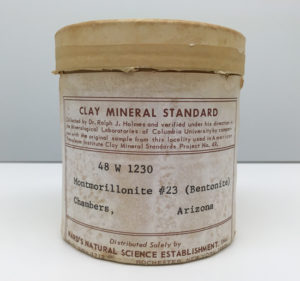
Following Faust's test methods, we first treated the bentonite clay with concentrated hydrochloric acid (38%). The sample was then washed three times using distilled water, and finally dried in a spot plate. The bentonite sample was stained with a dilute solution of crystal violet dye dissolved in nitrobenzene. As you can see from the photograph below, the desired color change referenced in Faust's article, from blue to yellow, was observed.
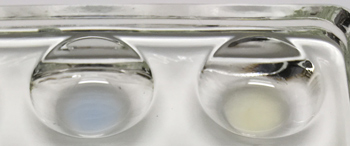
Certifiably Wrigley Field
With our newly-acquired knowledge of baseball infield dirt, we decided to buy what appeared to be authentic infield dirt from Chicago's Wrigley Field. The infield dirt was preserved and displayed in a handy-dandy keychain and claimed to be authenticated by Major League Baseball. As you can see from the photographs below, the keychain packaging states that the infield dirt is from Wrigley Field, and carries a certificate of authenticity.
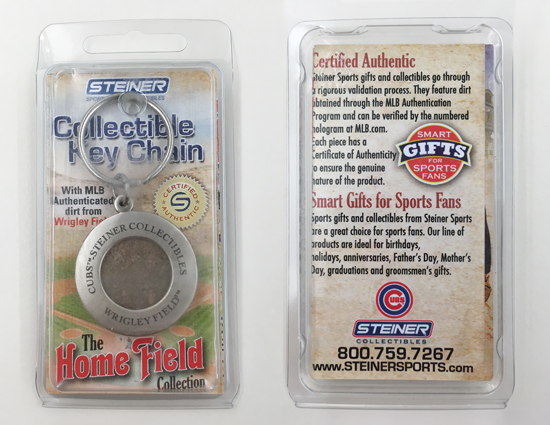
Upon opening the package and turning the keychain over, there is indeed a numbered hologram on the reverse side. By entering the code on the hologram into the MLB.com website, we were presented with a Certificate of Authenticity stating that the infield dirt in the keychain is from a bucket used at Wrigley Field.
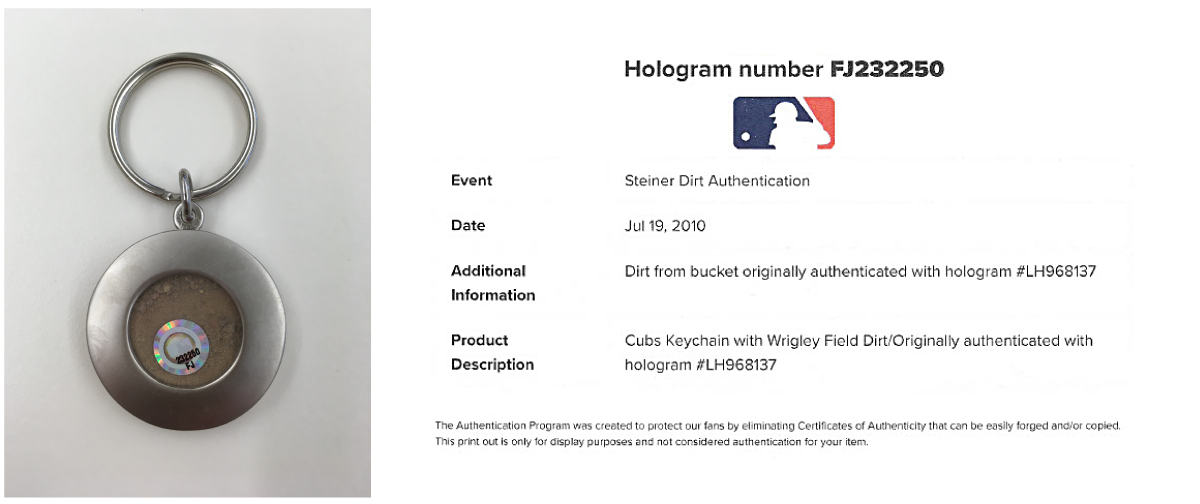
I think you know where this is going—we have to take a closer look at the infield dirt from Wrigley Field, and the only way to do that is to pry open the keychain. As it turns out, there is a fairly large slot at the bottom of the keychain that allowed us to slide in a small screw driver between the two metal faces. Without much prying at all, the front of the container popped off, revealing the Wrigley Field infield dirt sandwiched between two pieces of clear plastic.
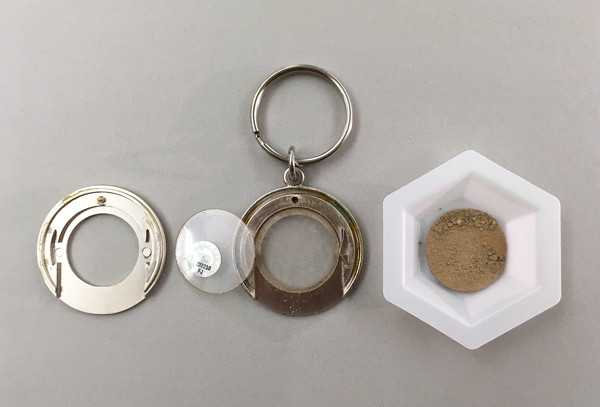
By removing the first piece of clear plastic, we were able to carefully place the infield dirt into a small weighing boat. We were hoping to be able to pour the loose infield dirt onto one of our sand study cards to be photographed with the stereomicroscope, but the manufacturers of the keychain used a strong two-sided adhesive tab to hold the dirt in place. The image below is a photomicrograph of the Wrigley Field infield dirt that was adhered to the tab.
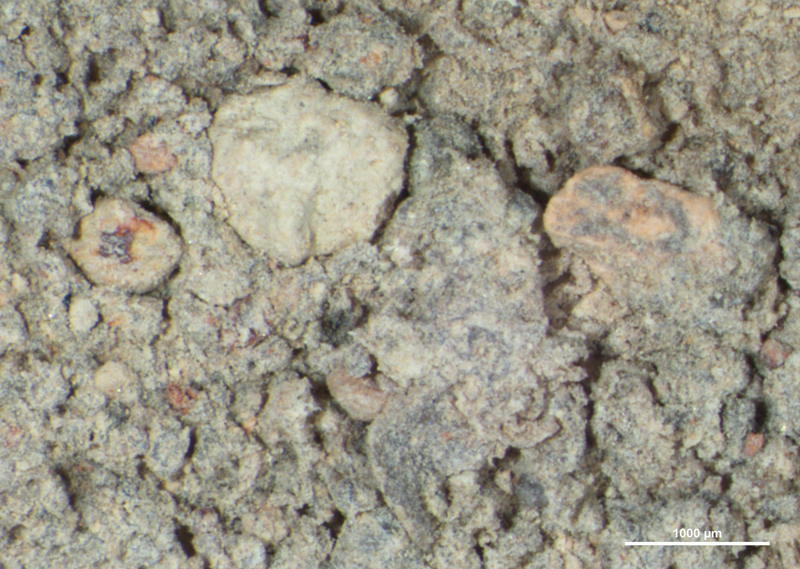
An Expensive Dirt-Cake
As almost everyone knows, the Chicago Cubs won the 2016 World Series. If you watched the game, you may remember the final out of the game, when Kris Bryant threw the ball to Anthony Rizzo, ending a 108-year World Series drought for the Cubs. The cleats that Bryant was wearing during the game were eventually purchased by Grant DePorter, the owner of Harry Carey's restaurant, for $35,000. DePorter brought Bryant's cleats, caked with infield dirt from Cleveland's Progressive Field, into the lab to be examined by McCrone Associates. DePorter was interested in taking a closer look at the infield dirt on Bryant's cleats using scanning electron microscopy. The analysis revealed some interesting features captured in the infield dirt: the Cubs logo and the face of legendary Chicago sports broadcaster Harry Carey.
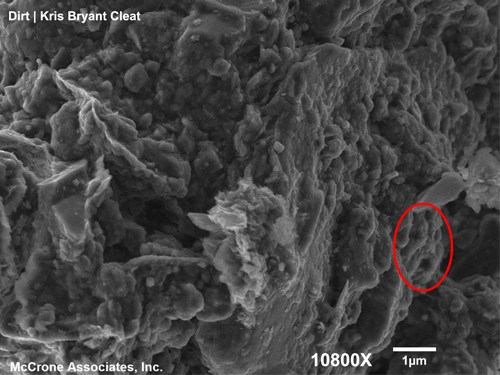
So, the next time you're watching a baseball game, and you see a player either sliding into home plate, or maybe diving for a stolen base, you will have a newfound appreciation for the thought and science that went into the dirt that makes up the game of baseball.
What Is Baseball Field Dirt Made of
Source: https://www.mccrone.com/mm/sand-gallery-update-taking-a-closer-look-at-baseball-infield-sand/
0 Response to "What Is Baseball Field Dirt Made of"
Post a Comment